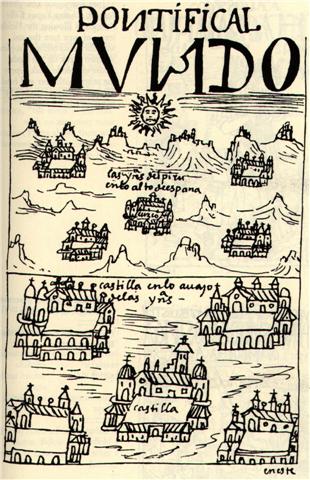It is easy to go backward in time if you have the right kind of upbringing, if you have 'culture', if you know your roots, have heard all the wonderful old stories retold so many times you know them 'by heart'. For us this is now a lost world, we have no past (especially so in Sweden). Instead we (all of us as separate individuals) imagine us capable of planning for the future, to see what must be done. Our eyes are blue and lying (for instance are we always underestimating the time and cost it takes to accomplish something). The elephants know the value of past experience, relying on the oldest in the herd - but not we. Any past experience is obsolete, and the past is coming closer and closer. The Polynesians, however, knew the value of accumulated knowledge: "For the Maori the past is an important and pervasive dimension of the present and future. Often referred to as the 'ever-present now', Maori social reality is perceived as though looking back in time from the past to the present. The Maori word for 'the front of' is mua and this is used as a term to describe the past, that is, Nga wa o mua or the time in front of us. Likewise, the word for the back is muri which is a term that is used for the future. Thus the past is in front of us, it is known; the future is behind us, unknown. The point of this is that our ancestors always had their backs to the future with their eyes firmly on the past. Our past is not conceived as something long ago and done with, known only as an historical fact with no contemporary relevance or meaning. In the words of a respected Maori elder: The present is a combination of the ancestors and 'their living faces' or genetic inheritors, that is the present generations. Our past is as much the face of our present and future. They live in us ... we live in them." (Starzecka) With time perceived as cyclical (instead of linear) you can easily follow the trail of the past and use it today. This world view was shared with the Indians of South America: "... Space and time are a single, related concept in Runasimi [the language of the Inca people], represented by one word, pacha, which can also mean 'world' and 'universe'. The image of time familiar to Waman Puma was static and spatial: one could travel in time as one travels over earth - the structure, the geography, remaining unchanged. To him it does not matter that he shows Inka Wayna Qhapaq, who died in 1525, talking to Spaniard, who did not arrive until 1532. Wayna Qhapaq was the last Inca to rule an undivided empire: he is therefore the archetype, and it must be he who asks the Spaniards. 'Do you eat gold?' In Andean thought both world and time were divided into four sectors or directions unified under a presiding fifth principle. The Tawantinsuyu - 'the indivisible four quarters' - was unified and presided over by Cusco, the center. Similarly, history was divided into four previous ages, presided over by a fifth, the present.
In his book, Waman Puma organizes the history of both Old and New worlds according to this scheme. The Old Testament and the pre-Inca times are each divided into four equivalent and parallel ages. The 'present' age in Peru begins with the appearance of Manku Qhapaq, the first Inca, a being of supernatural origin. And in the Old World the 'present' starts with the birth of Jesus Christ." (The Two Worlds of Peru) |
